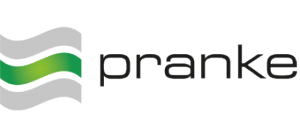eGate is generally to be considered as a closed community network. Therefore, when picking up messages with a SMTP Channel in eBiss, we want to use the Sender identification mandatory. This means that all possible sender eGate email addresses of my trading partners must be known in my eBiss system. This also applies to (third party) poviders who forward EDI messages on behalf of their customers. So if an eGate participant is offered in the participant search not only with a CUSTOMER.INI file but also with a SENDER .INI FILE I have to make sure that the eGate participant of the provider (or SENDER) exists as trading partner in my eBiss. If not, then I need to import the SENDER .INI file.
Example of an eGate participant with provider affiliation:
| Name | Tnr | GLN/UNB-ID | Customer .ini File | Sender .ini File |
|---|---|---|---|---|
| Muster GmbH, München (DE) | 1234567890 | 1234567890123 | Download | Provider |
If messages remain unprocessed in your INBOX and with an unknown partner, the reason may be that the validation in the receive channel was not successful.





